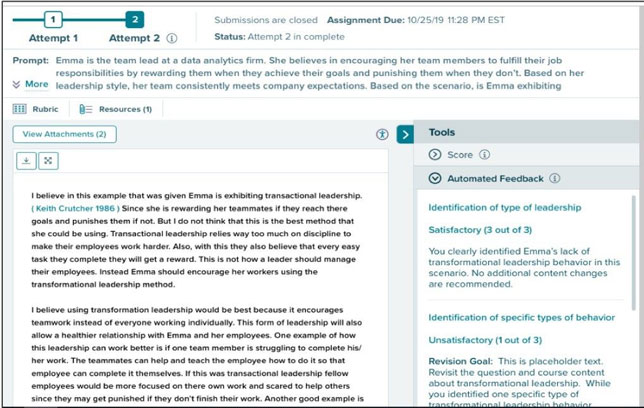McGraw-Hill Adds AI to Writing Software for High-Enrollment Courses
- By Dian Schaffhauser
- 03/05/20

McGraw-Hill Connect
McGraw-Hill has updated its writing assignment software to use artificial intelligence in giving feedback. Intended for high-enrollment courses where writing is an important aspect of the work, the technology uses AI to do auto-scoring on content and writing style and delivers instant feedback based on scoring rubrics set by the instructor.
The new functionality shows up in the company's Connect digital course materials, and specifically, in select Connect Master 2.0 products, designed for large general education and introductory business courses.
There are two other levels of operation for writing assignments. The most basic level uses a student interface within the Connect platform where instructors can create assignments and set up scoring rubrics, offer feedback, grade student writing and link to learning resources in comments. A secondary level provides automated grammar, writing and originality checks, showing "just-in-time" tips and links to learning resources in context as the student is writing.
The company said the tool was intended to address two challenges. First, many students need developmental support with their writing when they enter college. And second, instructors aren't necessarily trained to teach writing, and the time required to assess homework, give feedback and grade it can be "unmanageable" for faculty teaching large sections.
"We know writing is a critical skill for job-ready graduates and we've talked about writing across the curriculum for a long time," said Lisa Hoeffner, English professor at McLennan Community College in Texas and author of a McGraw-Hill-published textbook, Common Ground: Integrated Reading and Writing. "But the truth is, many faculty simply don't have the time to teach students how to write because they're too busy teaching in their disciplines or don't feel confident about their ability to teach writing. This tool will help faculty in any subject embed writing development in their courses — without having to be an expert in teaching or assessing their students' writing skills."
About the Author
Dian Schaffhauser is a former senior contributing editor for 1105 Media's education publications THE Journal, Campus Technology and Spaces4Learning.